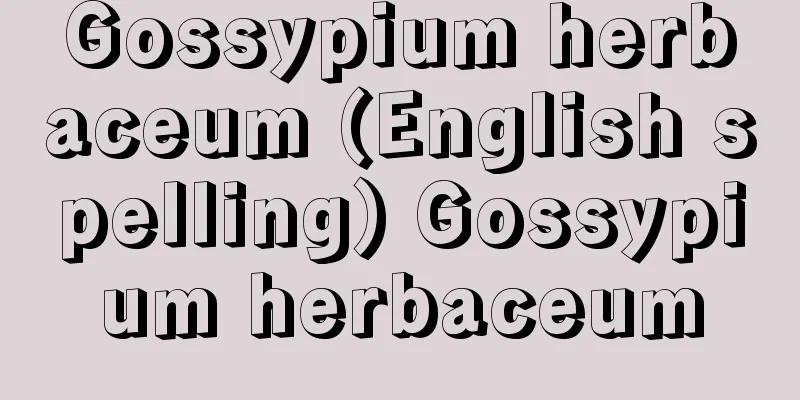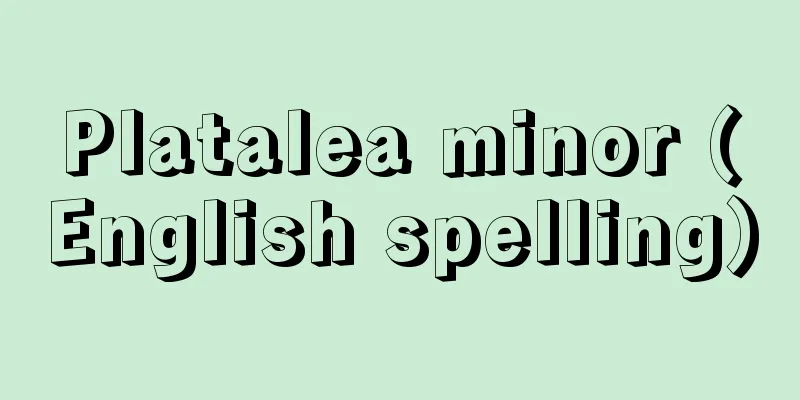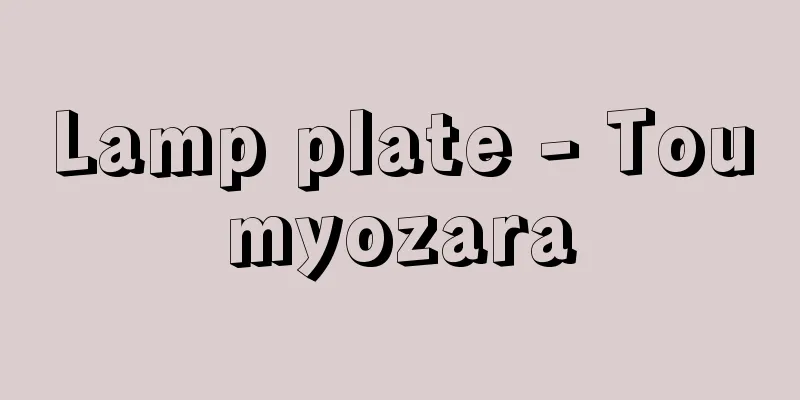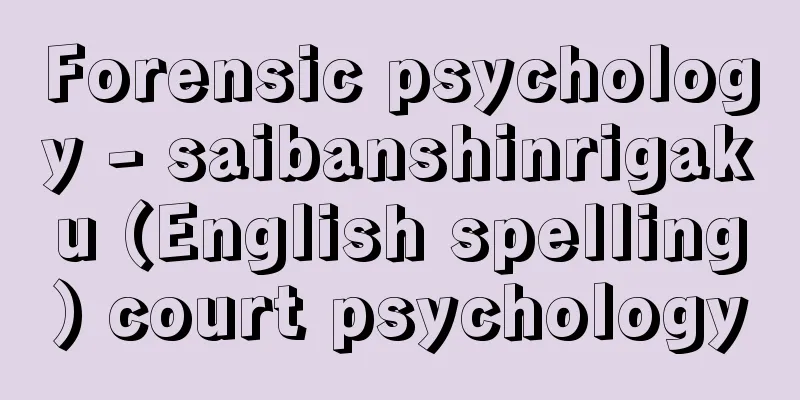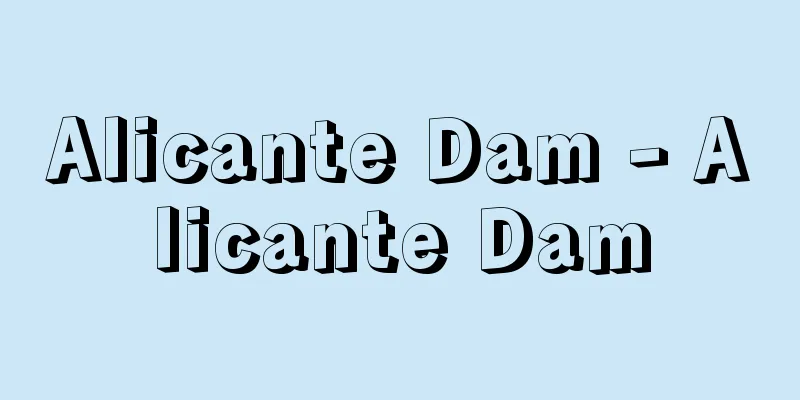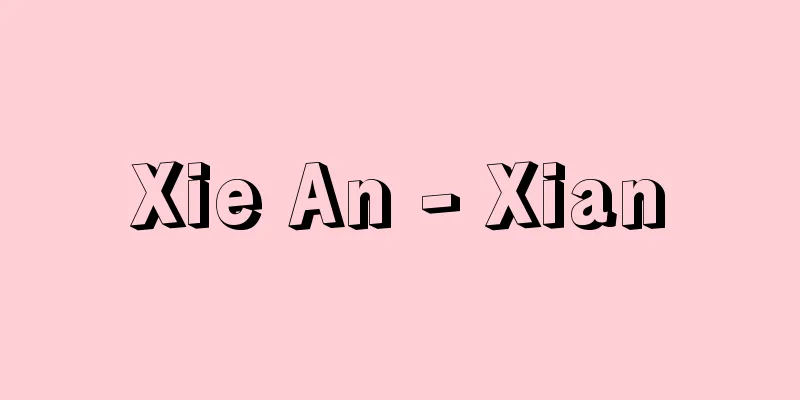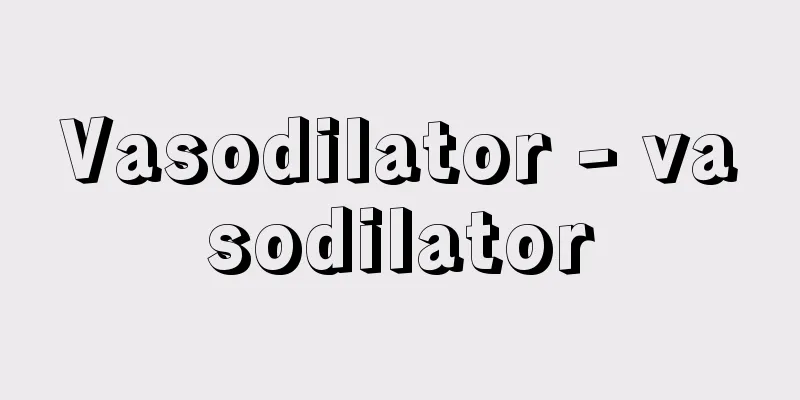Prison Law
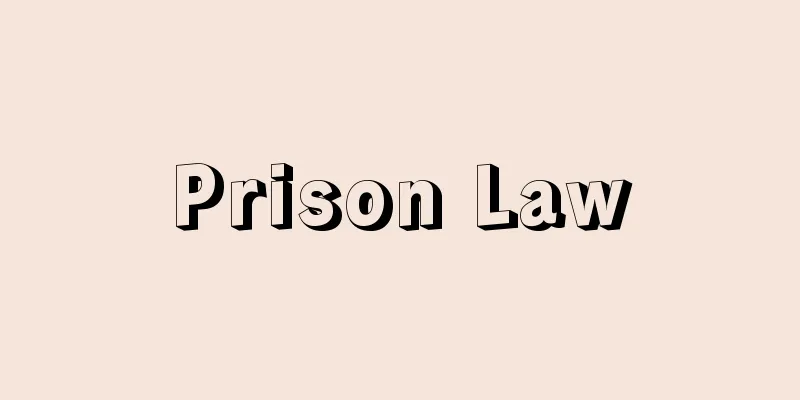
|
In a broad sense, it is a law that stipulates the content and form of criminal (convicted and unconvicted) detention, especially the manner in which imprisonment should be carried out. However, it was only in modern times, in Japan, after the Meiji period, that the penal system centered on imprisonment was established, so historically, the issue is rather the nature of pretrial detention. In a narrow sense, it refers to the Prison Law (Law No. 28 of 1908 (Meiji 41) and abolished in 2007 (Heisei 19). The title from May 24, 2006 to May 31, 2007 was "Law Concerning the Detention, etc. of Criminal Defendants in Penal Institutions"). It is the predecessor of the current Criminal Detention Facility Law (Law Concerning Penal Detention Facilities and Treatment of Detainees, Law No. 50 of 2005). [Shuichi Susuki and Masaoki Ishikawa] HistoryJapan's first prison law was the "Prison Rules" and "Diagram of Prison Rules" of 1872 (Meiji 5). Prison Chief Ohara Shigechika (1836-1902) created these after inspecting the penal system in the British colonies of Hong Kong and Singapore. The preface reads, "Prisons are a way to show compassion, not to make people cruel. They are a way to discipline people, not to make people suffer. Punishment is used when there is no way to stop it. It is a way to prevent harm for the good of the country," and is based on the oriental idea of compassion and "the term of punishment should be without punishment." Afterwards, in terms of form, new "Prison Regulations" were enacted in 1881, modelled on the prison systems of France and Belgium, and eventually the "Prison Law" was enacted in 1908, taking inspiration from the Prussian Ministry of the Interior Prison Regulations. As was fitting for the so-called era of civilisation and enlightenment, there was a strong influence of Christianity among those involved in the penal administration at the time, but at the beginning of a January 1946 (Showa 21) circular from the Director-General of the Prison Bureau entitled "Regarding the Basic Policy for the Implementation of the Prison Law" issued just after World War II, a portion of the preface to the aforementioned "Prison Regulations" was quoted, stating that abstract personal speculation and the resulting prejudices would be rejected, and a reaffirmation of this was declared, saying that this was "our old and wise tradition of penal administration." [Shuichi Susuki and Masaoki Ishikawa] Prison Law ProvisionsThe establishment of the Prison Law was a landmark event in criminal policy. It consisted of 13 chapters and 75 articles, and established the general framework for types of prisons, procedures for incarceration (holding someone in a prison), forms of detention, guarding (maintaining security within the prison), prison labor, religious instruction (fostering healthy religious and moral sentiments among inmates in prisons, etc.), education, visits and letters, rewards and punishments, etc., and regulated the lives of not only prisoners, but also pretrial detainees, those on death row, and those in workhouses, as well as the execution of the death penalty. The 20 years from the latter half of the Taisho era to the outbreak of the Second Sino-Japanese War (1937) were a glorious time for the so-called "educational penalties" debate. During this time, the "New Penal Trio" was promulgated: the "Parole Review Regulations" (May 1931), the "Juvenile Penal Education Order" (September 1933), and the "Progressive Penal Treatment Order" (October the same year). After the emergency regime of World War II, the "Prison Law" itself remained largely unchanged even after Japan was defeated and under the new constitution. Article 57, which related to police supervision in the case of parole, was deleted, but this was merely a positive absorption of the issue into the "Criminal Prevention and Rehabilitation Law" of 1949 (Showa 24), with the aim of abolishing police supervision and replacing it with probation. The most important postwar reform was probably the religious instruction system. In accordance with the principle of separation of religion and state, religious instruction by prison chaplains, who had been government officials since the Meiji era, was systematically abolished and activities were entrusted to private religious organizations. However, such a situation did not require any revision of the wording of the prison instruction provisions in the Prison Law. The strong influence of American correctional thought was manifested in the introduction of the "classification system." In 1948, the "Inmate Classification Survey Guidelines" were enacted (revised to the "Inmate Classification Regulations" in 1972). As a result, facilities for classified treatment, which aimed to "individualize treatment" according to the needs of each individual inmate, became more specialized, and a system was established for the so-called "scientificization of treatment" based on the findings of various empirical sciences regarding human behavior. [Shuichi Susuki and Masaoki Ishikawa] Movement towards reform of the Prison LawThe 1940s was a time of excessive detention, and the 1950s was a time of intensified complaints by inmates. From the mid-1960s to the 1970s, which corresponds to the mid-1970s, anti-authority and anti-prison struggles were active. It is said that the 1960s was a time of improvement in general treatment and strengthening of correctional treatment, starting with the partial revision of the Prison Law Enforcement Regulations in 1966, and the 1970s was a time of final accounting of postwar penal administration. That is, in 1976, the Legislative Council was consulted on the revision of the Prison Law, and in 1982, the Criminal Facilities Bill was prepared and submitted to the Diet along with the Detention Facilities Bill. This Criminal Facilities Bill was understood to be an attempt to more systematically codify the reality of penal administration that had been developed within the framework of the Prison Law. Japan's penal administration is considered to be fairly evaluated worldwide, but the real picture of penal administration cannot be seen by simply reading the Prison Law. In this way, the efforts of the practical side to socialize criminal justice (collaboration with the general public in criminal justice) only give people a fragmented impression. However, these two so-called "bundled bills" were subject to severe political criticism. It was said that the goal of "transforming from the Facility Management Law to the Detainee Treatment Law" had not been achieved, and that the Detention Facility Bill would solidify the substitute prison system (holding pretrial detention in police custody instead of in a detention center). These bills were scrapped in 1983 when the Diet was dissolved due to the Lockheed Scandal. The 1987 bill, which was a slightly revised version of the previous bill, and the same 1991 bill were continued for deliberation, while the 1993 bill was scrapped without being fully debated. [Shuichi Susuki and Masaoki Ishikawa] Penal reform and abolition of the Prison ActThe Prison Law, enacted in 1908 (Meiji 41), was to be completely revised in 2005 (Heisei 17), for the first time in almost a century. The major impetus for this was the series of incidents at Nagoya Prison, from 2001 to 2002, in which prisoners were killed or injured as a result of violence by prison guards. In March 2003, the "Criminal Reform Council," consisting of not only specialists in the field of criminal administration but also private experts in various fields, was established, as reforms to the administration of prisons needed to be considered from a broad perspective, including the public's point of view. As early as December of the same year, the council published "Recommendations from the Criminal Reform Council - Towards prisons that are understood and supported by the public," outlining its intention to completely revise the Prison Law. In response, the Ministry of Justice began drafting a bill. However, because opposition to the "substitute prison (now called "substitute penal institution")" system was expected, the revision of the provisions regarding the treatment of pretrial detainees was postponed, and the Prison Law was amended to focus on the treatment of prisoners first. As a result, the "Penal Institutions and Prisoner Treatment Act (Inmate Treatment Act)" was promulgated on May 25, 2005 (it came into effect one year later on May 24, 2006). Under this law, facilities that had long been called "prisons" were renamed "penal institutions," and other terms were changed, such as "incarceration" to "detention," "inmates" to "detainees," "cell" to "room," "prison official" to "prison officer," and "parole" to "parole." In addition, the title of the "Prison Law" was changed to "Law Concerning the Detention, etc. of Criminal Defendants in Penal Institutions," and the part relating to the treatment of pretrial detainees was left to this law. After the Prisoner Treatment Law was enacted, the Ministry of Justice began drafting a bill on the remaining issues regarding the treatment of pretrial detainees, etc. In June 2006, the "Law to Partially Amend the Law on Penal Institutions and Treatment of Prisoners" was enacted. This law integrated the provisions on pretrial detainees and those on death row into the Prisoner Treatment Law, and the title of the Prisoner Treatment Law was changed to the "Law on Penal Detention Facilities and Treatment of Detainees, etc. (Penal Detention Facility Law)" (however, the Penal Detention Facility Law did not come into effect until June 1, 2007). Thus, the "Prison Law," which had regulated Japan's penal system for nearly a century, came to an end. [Shuichi Susuki and Masaoki Ishikawa] "Daiyo Kangyo (Substitute Prisons)" by Asahi Shimbun Social Affairs Department (1992, Asahi Shimbun)" ▽ "Kaido Yuichi (ed.), "Prisons and Human Rights: Aiming for Reform in Institutionalized Isolation and Violence" (1995, Akashi Shoten)" ▽ "Introduction to Prison Reform" edited by the Criminal Legislation Study Group (1996, Nippon Hyoronsha)" ▽ "The Future of Substitute Prisons and Detention House Reform: Regarding the Revision of the Prison Law" edited by the Criminal Legislation Study Group (2005, Gendaijinbunsha, Daigaku Tosho Publishing)" ▽ "Study of the History of the Japanese Prison System" by Shigematsu Kazuyoshi (2005, Yoshikawa Kobunkan) ▽ "New Outline of Penal Law" edited by Kamoshita Moritaka, revised 2nd edition (2009, Tokyo Horei Publishing)" ▽ "Adult Corrections Law" edited by the Ministry of Justice Corrections Training Institute (2009, Corrections Association) [Reference] | | | | | | | | | | | | | | | |Detention facility|Source: Shogakukan Encyclopedia Nipponica About Encyclopedia Nipponica Information | Legend |
|
広義では、刑事(既決・未決)拘禁の内容と形式、とくに自由刑執行のあり方を規定した法律。ただし、自由刑中心の刑罰体系が確立されたのは、近代、日本では明治以降のことで、歴史的には、むしろ、未決拘禁のあり方が問題になる。狭義では、1908年(明治41)に制定され、2007年(平成19)に廃止された「監獄法」(明治41年法律第28号。2006年5月24日~2007年5月31日の題名は「刑事施設ニ於ケル刑事被告人ノ収容等ニ関スル法律」)をいう。現行の「刑事収容施設法(刑事収容施設及び被収容者等の処遇に関する法律、平成17年法律第50号)」の前身となった法律である。 [須々木主一・石川正興] 沿革日本における最初の監獄法は、1872年(明治5)の「監獄則」・「監獄則図式」である。監獄権正(ごんのじょう)小原重哉(おはらしげちか)(1836―1902)が香港(ホンコン)・シンガポールのイギリス植民地行刑を視察してこれを作成した。その緒言には「獄ハ人ヲ仁愛スル所以(ゆえん)ニシテ人ヲ残虐スル者ニ非(あら)ス。人ヲ懲戒スル所以ニシテ人ヲ痛苦スル者ニ非ス。刑ヲ用ルハ已(やむ)ヲ得サルニ出(い)ス。国ノ為(ため)ニ害ヲ除ク所以ナリ」とあって、東洋的な仁愛思想、「刑期于無刑(刑は刑なきを期す)」の思想に根底を据えている。その後、形式のうえでは、フランス・ベルギーの獄制にならって1881年に新「監獄則」が、やがて、プロシア内務省監獄規則を参考にして1908年に「監獄法」が制定された。いわゆる文明開化の時代にふさわしく、当時の刑政関係者にキリスト教の影響が濃厚にみられるが、第二次世界大戦直後の1946年(昭和21)1月の行刑局長通牒(つうちょう)「監獄法運用ノ基本方針ニ関スル件」の冒頭には、抽象的個人的思議とこれによる偏見を排す、として、前記の「監獄則」緒言の一部が引用され、これこそが「我ガ旧(ふる)クシテ賢明ナル行刑精神ノ伝統ナリ」と、その再確認が宣言された。 [須々木主一・石川正興] 監獄法の規定「監獄法」の成立は、刑事政策上、画期的なできごとであった。それは13章75条からなり、監獄の種類、収監(人を監獄に収容すること)の手続、拘禁の形式、戒護(刑務所内の保安を維持すること)、刑務作業、教誨(きょうかい)(刑務所などで被収容者の健全な宗教心・道徳心を養うこと)・教育、接見・信書、賞罰等に関する大枠を定め、受刑者ばかりでなく、未決拘禁者、死刑確定者、労役場留置者などの生活全般を規律するとともに、死刑の執行に関しても規定していた。 大正時代後半から日中戦争勃発(ぼっぱつ)(1937)に至る20年ばかりの間は、いわゆる「教育刑」論の華やかな時代である。そこで「新行刑トリオ」といわれた「仮釈放審査規程」(1931年5月)、「少年行刑教育令」(1933年9月)、「行刑累進処遇令」(同年10月)が公布された。これに続く第二次世界大戦時の非常体制を経て、敗戦、そして新憲法のもとでも、「監獄法」そのものに大きな変更はなかった。仮出獄の場合の警察監視に関する第57条は削除されたが、これは、警察監視を廃止して保護観察に変える趣旨で、問題を1949年(昭和24)の「犯罪者予防更生法」のなかに前向きに吸収するというだけのものである。戦後改革のうちで最重要事項は宗教教誨制度に関することであろう。政教分離の原則に従い、明治以来の官吏であった教誨師による宗教教誨が制度的に廃止され、活動は民間の宗教団体に委ねられた。しかし、そのような事態も「監獄法」の教誨規定の文言に修正を要するものではなかった。アメリカ矯正思想の強い影響は「分類制度」の導入に形をとって表れる。1948年には「受刑者分類調査要綱」が制定され(1972年「受刑者分類規程」に改正)、その結果、受刑者一人一人の必要に応じた「処遇の個別化」を目ざす分類処遇のための施設の特殊化が進むとともに、人間行動に関する実証的な諸科学の知見に基礎をおいた、いわゆる「処遇の科学化」のための態勢が整えられていった。 [須々木主一・石川正興] 監獄法改正に向けての動き昭和20年代は過剰拘禁の時代、昭和30年代は被収容者の不服申立て激化の時代である。1970年代にあたる昭和40年代の中ごろから昭和50年代にかけては、反権力・反監獄闘争が盛んであった。1966年(昭和41)の監獄法施行規則の一部改正をはじめ、昭和40年代は一般処遇の改善向上と矯正処遇の充実強化の時代であり、昭和50年代は、戦後行刑の総決算の時代であった、といわれている。すなわち、1976年には法制審議会に対する監獄法改正の諮問(しもん)があり、1982年には刑事施設法案が作成されて、留置施設法案とともに国会に提出されることとなった。この刑事施設法案は、従来「監獄法」の枠内で展開された行刑の実体をより体系的に成文化しようとするものと理解された。日本の刑政は世界的にも正当に評価されるべきものとされているが、「監獄法」を読むだけでは行刑の実像がみえてこない。そのようなことでは、行刑の社会化(行刑における一般社会との連携)という実務側の努力も、人々に断片的な印象を与えるにとどまる。しかし、これら二つのいわゆる「抱き合わせ法案」については政治的批判が厳しかった。「施設管理法から被拘禁者処遇法へ」という目標が達成されていない、留置施設法案は代用監獄(未決拘禁を拘置所ではなく警察の留置場で行うこと)制度を固定化させるものである、といわれた。これらの法案は、1983年のロッキード事件による国会解散にまぎれて廃案になった。先の法案に若干の手直しをした1987年法案、これと同一の1991年(平成3)の法案は継続審議、1993年の法案は審議未了のまま廃案となった。 [須々木主一・石川正興] 行刑改革と監獄法廃止1908年(明治41)に制定された監獄法は、2005年(平成17)にほぼ1世紀ぶりに全面改正されることになった。その大きな契機となったのは、2001年から2002年にかけて名古屋刑務所で相次いで起こった、刑務官の暴行による受刑者の死傷事件である。2003年3月には、行刑運営に関する改革のためには、国民の視点にたって幅広い観点から検討することが必要であることから、行刑分野の専門家のみならず、さまざまな分野の民間有識者からなる「行刑改革会議」が設置された。同会議は早くも同年12月に「行刑改革会議提言~国民に理解され、支えられる刑務所へ~」を公表し、監獄法を全面改正する方針を示した。 これを受け、法務省は法案作成作業に着手。しかし、「代用監獄(現在は「代用刑事施設」)」制度への反対が予想されたために未決拘禁者等の処遇に関する規定の改正は後回しにし、まずは受刑者の処遇を中心として監獄法の改正をすることにした。その結果、2005年5月25日に「刑事施設及び受刑者の処遇等に関する法律(受刑者処遇法)」が公布された(施行は1年後の2006年5月24日)。同法により、長い間「監獄」という名称でよばれてきた施設は「刑事施設」と改称されたほか、たとえば「収監」は「収容」、「在監者」は「被収容者」、「監房」は「居室」、「監獄官吏」は「刑務官」、「仮出獄」は「仮釈放」へとそれぞれ改められた。また、「監獄法」の題名は「刑事施設ニ於ケル刑事被告人ノ収容等ニ関スル法律」と改称され、未決拘禁者等の処遇に関する部分はこれに委ねられることになった。 受刑者処遇法成立後、法務省は積み残された未決拘禁者等の処遇に関する法案の作成に着手。2006年6月には「刑事施設及び受刑者の処遇等に関する法律の一部を改正する法律」が成立した。この法律により、未決拘禁者・死刑確定者についての規定は受刑者処遇法に統合されるとともに、受刑者処遇法の題名も「刑事収容施設及び被収容者等の処遇に関する法律(刑事収容施設法)」に変更された(ただし、刑事収容施設法の施行は2007年6月1日)。こうして、約1世紀にわたって日本の行刑を律してきた「監獄法」は、幕を閉じることになった。 [須々木主一・石川正興] 『朝日新聞社会部著『代用監獄』(1992・朝日新聞社)』▽『海渡雄一編『監獄と人権――制度化された隔離と暴力 その改革をめざして』(1995・明石書店)』▽『刑事立法研究会編『入門・監獄改革』(1996・日本評論社)』▽『刑事立法研究会編『代用監獄・拘置所改革のゆくえ――監獄法改正をめぐって』(2005・現代人文社、大学図書発売)』▽『重松一義著『日本獄制史の研究』(2005・吉川弘文館)』▽『鴨下守孝編著『新行刑法要論』全訂2版(2009・東京法令出版)』▽『法務省矯正研修所編『成人矯正法』(2009・財団法人矯正協会)』 [参照項目] | | | | | | | | | | | | | | | | |出典 小学館 日本大百科全書(ニッポニカ)日本大百科全書(ニッポニカ)について 情報 | 凡例 |
<<: Korea Broadcasting Corporation - カンコクホウソックコシャ
>>: Annexation of Korea - カンコクヘイゴ
Recommend
Koma Fukushin - Koma no Fukushin
Year of death: Enryaku 8.10.17 (789.11.8) Year of ...
Yuriy Nikolaevich Libedinskiy
Soviet novelist. Born in Odessa, Ukraine, to a do...
Takano no Niikasa - Takano no Niikasa
Year of death: December 28, 8th year of the Enryak...
Eastern [town] - Tobu
A former town in Chiisagata County, eastern Nagano...
Almoravide (English spelling)
…1056-1147. In Spanish, Almoravid. On his way bac...
Ezomuukashiebi - Ezomuukashiebi
…Since the first species, Bathynella natus , was ...
Coysevox (English name) Antoine Coysevox
1640‐1720 France's chief sculptor of King Loui...
Circular pipe
...The heat transfer medium evaporates at one end...
Subsonic flow - Aon-soku-ryu (English spelling) subsonic flow
Subsonic flow is a high-speed airflow in which the...
Jabern, DL (English spelling) JabernDL
...An ultra-short-acting barbiturate hypnotic. It...
Hernici tribe - Hernici (English spelling)
An ancient Italian tribe that lived in the central...
Long Calendar - Choryaku
The Japanese era name (nengo). It was the era name...
Gray waxbill - Gray waxbill
A bird of the family Acanthidae (illustration) in ...
Goose-infesting grass - Gafushokuso
…It is also called tanehirigusa or hanahirigusa. ...
Urechis unicinctus
...It is a favorite food of bottom fish, and the ...
